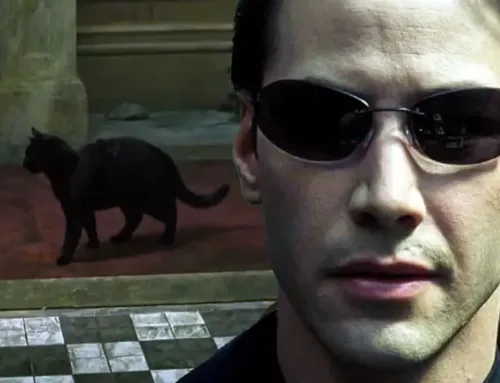We gave up on talking about America’s annual Super Bowl ad extravaganza long ago, and the last time we did, we pointed to someone else’s great take on it [1]. Over the last few years, we’ve been getting the feeling that the UK marketing industry’s fanaticism over their Christmas campaigns is going in the same direction. Let’s look at this phenomenon.
Refresher on Super Bowl
The Super Bowl is a major entertainment event that became a major media event. Last year, viewership was over 125 million average viewers, the vast majority of whom were watching on old-fashioned linear TV. Hence the ‘major media event’ status—no other single event delivers that big a traditional TV audience. As I’m sure you’ve heard or read, more than 20% [2] of the Super Bowl audience is there primarily to watch the commercials.
But Super Bowl ads seem to have lost their close connection to selling a product or service, at least in the short term. Liking a brand’s ad creative is not the same as being motivated to run out and purchase it—though both are obviously in the purchase funnel. The Super Bowl telecast is a four-hour American cultural circus. And then it’s over.
Here’s what’s generally regarded [3] as the most-liked creative of this year’s Super Bowl, Budweiser’s, “First Delivery”.
Note: Outside of the top three, not all Super Bowl creative is this well done. If you need an example, look up Coffee Mate’s “Let’s Go Tongues”.
UK Christmas
For years now, big UK-based retailers like Tesco, Sainsbury, John Lewis, M&S, and global brands with big UK footprints like IKEA have been battling it out with unique creative for the Christmas season. Like Super Bowl, their flagship creative tends to be TV-focussed and long format. Themes circle around the best of secular Christmas: sharing what matters most with family and friends, diversity and thankfulness. The brand becomes somewhat of a background player. As with the Super Bowl, UK marketers seem to be even more interested in this annual extravaganza than the public.
Example, John Lewis’s “Where Love Lives”, this year’s early leader in liking [4].
What’s common
Note that when the advertiser thinks it really matters, they go with long form old-school linear TV. Some of these spots are one or two minutes. This is a bit of a surprise when these same brands are running with creative that’s viewable for less than 2.5 seconds in their digital campaigns the majority of the time [5]. And digitally-based performance marketing represents the majority of their annual brand investment.
What’s different
Super Bowl is pure long-term brand building. That’s a very good thing, except that effective and efficient brand building requires consistency in creative, media or both. But like so many Super Bowl spots, ‘First Delivery’ is a one-off, not carried forward in any discernable way [6].
The UK Christmas campaign supports the retail industry’s most important two months of the year. In this sense, it’s both a brand-building and performance marketing exercise. The one-to-two-month campaign duration means the flagship creative can be (and is) repurposed to shorter format TV and video, outdoor (OOH), print and digital media.
The Take Away
UK Christmas has the clear opportunity to not become Super Bowl. The differences between the two are more critical than the commonalities.
In the long term, marketing is a reflection of the culture and values of its creators. At the risk of straying outside the Marketing Wilderness mandate, Super Bowl and the marketing that surrounds it is a reflection of American culture. Heavy on ratings and other popularity measures. UK Christmas marketing is focussed on business results. Its creative is focussed on kinder, gentler human values.
The Outlier
While researching for this post, we stumbled across Coca-Cola’s “Holidays are Coming” TV creative, also running in the UK and hailed as worthy of being considered one of the best of the season. Coca-Cola, a quintessential America brand, has been one of Super Bowl’s most tenured advertisers, right behind Pepsi and Budweiser. But Coca-Cola’s last appearance in Super Bowl was 2020. They may be on to something, like business results. Although there has been controversy over Coca-Cola’s use of AI in its recent video creative, we believe it works really well here. This is, after all, fantasy.
- “WHAT’S WRONG WITH THE SUPER BOWL?” Note that Tom Denari’s post cited here is from 15 years ago and was titled, “Why Animals Speak in Super Bowl Ads”. Today, it might be, “Why Celebrities Speak in Super Bowl Ads”.
- Based on CivicScience’s 2025 pre-Super Bowl survey.
- Based on USA Today’s Ad Meter.
- Ipsos’s ‘Race to Christmas’ survey (2025), as reported by Marketing Week, Nov14-25.
- Peter Field & Dr Karen Nelson-Field, “The eye-watering cost of dull media”, ThinkTV, Oct, 2025.
- Budweiser would likely suggest that ‘First Delivery’ was a long-awaited return to the brand’s iconic Clydesdale heritage, not requiring reinforcement. We would argue the Clydedales are Gen X and Boomer heritage, not Gen Z and Millennial heritage.






Leave A Comment